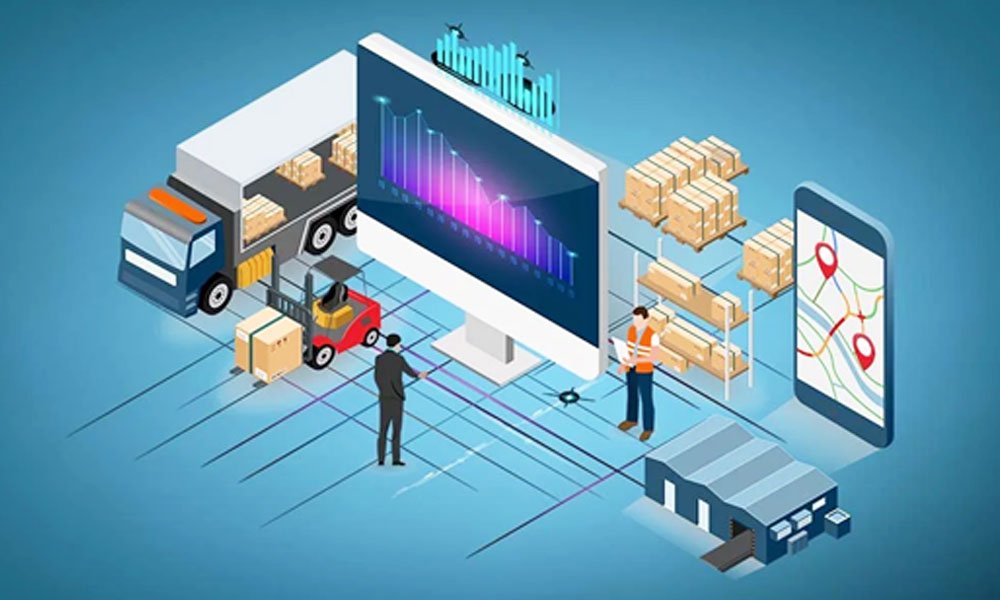In today’s fast-moving world, getting products to customers quickly and accurately is more important than ever. People expect fast shipping, real-time updates, and fewer mistakes. This puts a lot of pressure on businesses to improve how they manage their deliveries and warehouses.
To keep up, many companies are turning to logistics technology. These tools help businesses plan, track, and complete deliveries more easily. Two key areas where technology is making a big difference are last mile logistics and cross docking. Let’s take a closer look at why these are so important—and how technology can help.
What Is Last Mile Logistics?
Last mile logistics is the final step in the delivery process. It’s when a product goes from a local warehouse or transportation hub to the customer’s door. This is often the shortest part of the delivery journey, but it’s also the most complicated and expensive.
Why is the last mile so challenging?
- High customer expectations: Customers want same-day or next-day delivery.
- Traffic and route issues: Drivers often face traffic jams, road closures, or hard-to-find addresses.
- Delivery mistakes: Incorrect or missed deliveries can lead to unhappy customers and extra costs.
Without the right tools, managing last mile deliveries can become a major headache. That’s where logistics technology comes in. It helps plan better routes, updates customers in real-time, and allows businesses to fix problems quickly.
What Is Cross Docking?
Cross docking is a smart way to handle products without storing them for long. Instead of putting goods into storage, they are quickly moved from the truck that brings them in to the truck that takes them out. This saves time, money, and space.
Here’s an example:
Let’s say a shipment of shoes arrives at a warehouse. Instead of putting them on shelves, workers unload the boxes and send them straight to the delivery trucks headed to different stores or customers. The shoes don’t sit in the warehouse—they keep moving.
This method is great for:
- Reducing storage costs
- Speeding up delivery times
- Cutting down on damaged or lost goods
But cross docking needs perfect timing and organization. One small mistake can cause delays or confusion. That’s why using technology is so important for cross docking to work smoothly.
How Technology Helps Logistics
Using software for logistics companies is one of the best ways to manage complex delivery and warehouse tasks. This kind of software can:
- Track deliveries in real-time
- Create the best delivery routes automatically
- Keep records of inventory and shipments
- Reduce errors by automating tasks
- Give updates to customers and staff
Technology gives logistics managers more control and better information. Instead of relying on paper, spreadsheets, or phone calls, everything is in one system.
A Real Example: CartonCloud
One helpful tool that many businesses use is CartonCloud. It’s a simple but powerful software designed for transport and warehouse companies. CartonCloud helps with planning deliveries, managing inventory, and keeping everything running smoothly.
Some benefits of using CartonCloud include:
- Easy-to-use dashboard for tracking deliveries
- Automated reports to help improve performance
- Mobile app for drivers to update delivery progress
- Inventory tracking that’s always up to date
With tools like this, businesses can save time, cut costs, and offer better service to their customers.
Why This Matters for Your Business
Whether you run a small delivery service or a large warehouse operation, logistics technology can make a big difference. It helps you:
- Keep up with growing demand
- Avoid mistakes and delays
- Deliver faster and more accurately
- Stay competitive in a crowded market
Both last mile logistics and cross docking are areas where speed and accuracy matter most. And without the right systems in place, it’s easy to fall behind.
By investing in technology and tools like CartonCloud, businesses can improve their operations, satisfy customers, and grow with confidence.
Final Thoughts
The world of logistics is changing fast. Customers want quicker deliveries, and businesses need smarter ways to manage them. That’s why logistics technology is no longer just “nice to have”—it’s a must-have.
From improving last mile deliveries to streamlining cross docking, the right software can transform how a business runs. If you’re looking to save time, reduce costs, and make customers happy, now is the time to explore what logistics technology can do for you.


